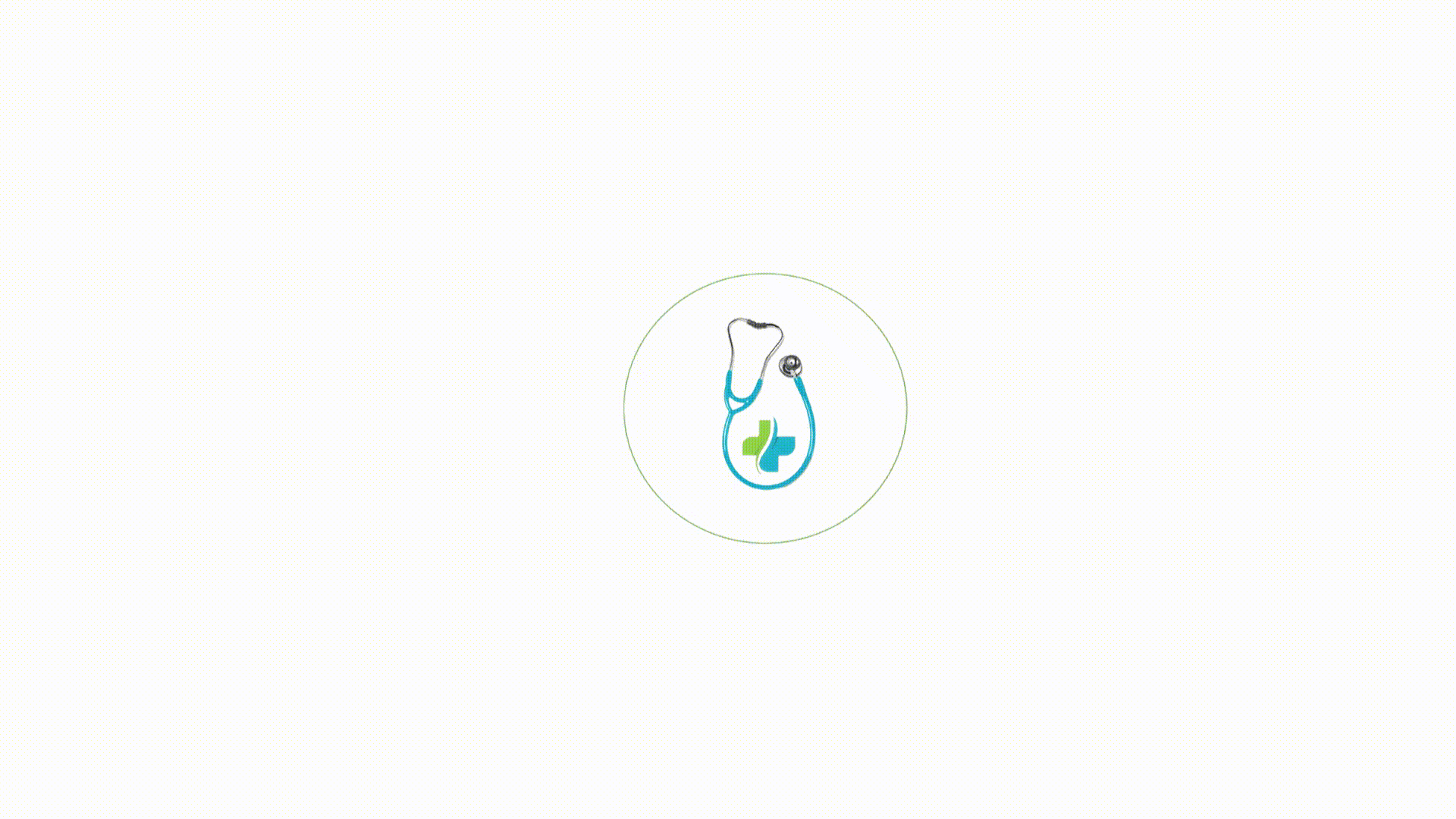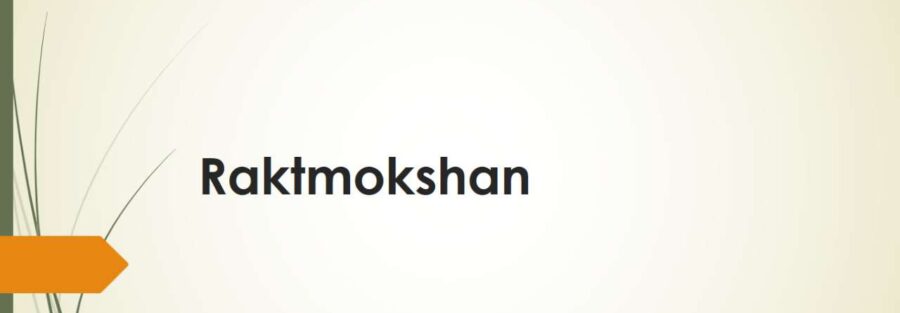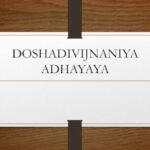Abstract
Raktmokshan is one of the therapy of Panchkarma. Raktmokshana deals with removal of toxic or polluted blood.It has been seen raktmokshan has been very effective in the treatment of various skin diseases like eczema, psoriasis etc. Rakta is mainly a dushya in samprapti ghatak. Through raktmokshan impure blood comes out of the body. According to Aacharya Sushruta body is constructed from blood and without blood a person cannot live. A wise man should try hard to protect his blood. It has been seen that raktmokshan has always been a topic of conflict. The followers of Atreya doesn’t include raktmokshan in Panchkarma. Raktmokshan is very important in order to keep a healthy person healthy and to remove the doshas from a diseased person and also to prevent any new disease to occur further. “According to Aashtang Hridayam sutrasthan (19/87)”. The person who involves himself in raktmokshan and it periodically is protected from various skin diseases, swelling and diseases of different glands. “According to Sushruta sutrasthan 14/29”. It is being said that Raktmokshan causes shudhi of different dhatus. Raktmokshan can be divided into two parts:- First part includes doing raktmokshan without the use of any surgical instruments it consist of –‘Jalauka’, ‘Shring’, ‘alabu’, ‘ghati’The other consists of doing Raktmokshan with the help of surgical instruments these are ‘prachan’, ‘siravedh’. Raktmokshan is also done according to the dosha which is predominant in the body. In case if vata is dominant then we do Raktmokshan by shring, in case of pitta we do Raktmokshan by jalauka, in case of kapha we do Raktmokshan by alabu, and for the whole body we do Raktmokshan by siravedha(venesection).
Introduction
Procedure for Raktmokshan
Poorvakarma
- Sambhar sangrah
- Aatur pariksha
- Decision of matra and time
- Aatur sidhta and management of food.
Let’s start with decision of matra
According to Aacharya Charaka first we have to look at the strength, pranam of dosha and then the place of rakta dosha.Look at the condition of the patient and then decide the quantity of Raktmokshan according to strength, dosha and place.
According to Vridh Vaghbhatt – The amount of blood that comes out after Raktmokshan should not be greater than one prasth.One should keep in mind the strength of patient and condition of disease plus the environmental conditions while tooking out blood in Raktmokshan.
According to Dulhad matra of blood in superior degree of Raktmokshan is 1 prastha, In medium degree of Raktmokshan it is 1/2 prastha ,In lower degree of Raktmokshan it is 1 kudav.
According to Vagbhatt- In a healthy person the quantity of impure taken out during Raktmokshan should not be greater than 1 prastha.
Decision of Time
According to Aacharya Charaka, Vridhvaghbhata, Vaghbhata blood becomes impure in autumn season (sharad). Raktmokshan should be done in Autumn season.
Aatur sidhta
According to Aacharya Sushruta
Snehan(oleation) and Swedan( sudation)- After proper snehan and swedan dosha melt and then move in blood and finally they are moved out.
- According to Vridhvaghbhata- Meat curry, Yavangu should be given first after that either in the morning or night sudation should be given either from vapour or heat of burning coal or cow dung .
Management of food
One should give Yavangu and food having high proportion of liquid in them.
Pradhan karma
Raktmokshan by using shringa:-
Shring in simple term are basically the horns of cow. Which is usually hollow hence used in Raktmokshan.
Procedure
- Follow the before therapy (poorvakarma).
- On a rugna place make a cut with the help of scalpel.
- After from the broad opening end tie a thin cloth place that end on the cut end and the doctor should suck the blood through the other end.
- In this procedure the impure blood is removed and patient get relief from pain.
- In ancient times people using shring were called Jarah.
Raktmokshan by using Alabu:-
According to Sushruta sutrasthan (13/7)
In blood which is polluted by kapha we use alabu.
Its properties are rough,katu,tikshna.
In daily language people call it bottle gourd or tumbi.
Procedure
- Cut Cucurbits lagneria or Lagneria vulgaris and remove the inner flesh and make it hollow.
- Do all the poorvakarma before starting the procedure.
- First at a rugna place with the help of scalpel make a cut
- After that lit up a diya and put it in the mouth of alabu and place that alabu on the cut or pierced end. Please keep in mind that there should be no place between alabu and rugna skin.
- Due to warmness of diya cough starts melting.
- Due to lightning up of diya in alabu the amount of oxygen starts dimnishing and ultimately the diya stops burning.
- As a result in order to equalize pressure inside alabu it starts sucking and thus the cough polluted blood moves out.
Raktmokshan by the use of Ghatiyantra.
- It works same as alabu.It looks like a cupping glass. Aacharya Charaka has told it’s use in Gulm roga.
- In a pot lit up fire by using jute wires, kush.
- At place where Gulm has occurred tie a cloth at that place and place the pot over it. After sometimes Gulm moves from its place and moves in the pot.
- After removing the pot with the help of vimarg, Aajpad, Aadarsh instruments. With the help of these instruments keeping in mind and protecting inner organs piercing is done.
Doing Raktmokshan by using Jalauka:-
According to Sushruta sutrasthan (13/3). In king, rich people, children, old age, weak persons, coward people the best way to take out impure blood is Jalauka.
Types of Jalaukas
They are total of 12 types.Out of which 6 are poisonous whereas other 6 are non poisonous and use for medical purpose.
Name of poisonous Jalauka:- Krishna, Karbura, Algarda, Indrayudha, Samudrika, Gochandana.
Name of Non poisonous Jalauka:- Kapila, Pingla, Shankumukhi, Mushika, Pundrimukhi.
How to catch non poisonous Jalauka- Catch them with wet leather and attract them with the help of meat, Ghrita and milk and when they come to eat these things try to catch them.
After catching them put them in a pot which should be filled with pond water and some pud give them dry flesh, water chestnut etc kanda churna to eat. Replace water of pot on every third day and replace entire pot on every seventh day.
Procedure mentioned in Sushruta sutrasthan (13/19)
- Person in whom Leech application has to be either in sitting or sleeping position.
- Place where Jalauka has to be applied should have no injury make that place rough by the use of either mud or gobar churna.
- Now took out the Jalauka(leech) which was caught and stored in the pot .Its body should be coated with kalka of mustard and turmeric and then it should be placed in a vessel filled with water for sometime.
- Now Jalauka should be placed on the polluted end of patient body for blood sucking.Cover the body of Jalauka(leech) except the mouth with the help of a thin cloth.
- If the Jalauka is not sucking blood or sticking at that place apply blood or sprinke some drops of milk if still the the Jalauka doesn’t stick then use another one.
When to remove Jalauka(leech).
- If patient stars feeling itchy and sensation of pain as if someone is piercing a pin this means that Jalauka is drinking pure blood. In that case one should remove the Jalauka from the applied area.
- If the Jalauka is not leaving the place due to greed of fresh blood then sprinkle some salt on the mouth of Jalauka.
Treatment of injury cause by Jalauka during blood sucking.
At the site of injury apply honey and rub it sprinkle cold water on the wound or apply/tie a bandage around the injured area.
On the injured area apply lepa of kashaya, madhur snigdha and cold substances.
Depending on the yoga ,atiyoga and ayog of jalaukavacharan use shatdhaut ghrit.
Raktmokshan in which surgical instruments are used:-
Prachchan
Nashtar ( use of Lancet) or pachne is called prachchan.
Synonyms:- Shastrapad, pad
According to Sushruta sutrasthan 14/26
Prachchan karma should be straight, minute, do not meet each other in same order nor be too dangerous nor be very spreading. While doing prachchan karma at places polluted by the doshas one should take care of different marma ,veins, cartilage and joints.
Conditions in which prachchan karma shouldn’t be done.
According to Sushruta sutrasthan (14/27).
When the weather is cloudy, rainy, place where veins and joints are present, in presence of cold air, without doing proper sudation and after eating food this procedure should be avoided as it may lead to coagulation of blood hence no impure or very less impure blood comes out.
Method of doing Raktmokshan by using surgical instruments:- According to Aashtang Hriday sutrasthan (35/8-9) and Aashtang Sangrah sutrasthan (26/51-52)
- At the place where prachchan has to be done a little above that place tie the body part with a rope or bandage tightly now taking care of joint , cartilage, bones and marma apply prachchan।
- Lines made for prachchan should run from down to up. They should neither be be too deep, nor oblique and one should keep in mind not to make one mark over another mark.
Changes occurring in ayog raktvistravan(prachchan).
Itching, redness, swelling, burning sensation and excessive pain these are the things that occur in patients when pra.
Symptoms occurring in samyak prachchan karma:-
According to Sushruta sutrasthan (14/32).
When impure blood has come out bleeding stops automatically.
According to Sushruta sutrasthan(14/33).
Decrease in body pain , decrease in severity of body pain, decrease in severity of disease and increase in happiness and enthusiasm these are the few changes that occur when the procedure has been done properly.
Atiyoga Symptoms
In excessive warm season or in case excessive sudation has been done or the procedure has been done by some person who didn’t had the proper knowledge of the procedure and due to which blood comes out in greater quantity. Due to all this conditions it may lead to disease of veins, blindness etc. It may also cause hiccups, pulmonary disorders, cough and anaemia.
Atiyoga Treatment
- In kwatha of kakolyadi group medicines add sugar and honey and use it.
- Use of Sal, Ral, Arjun, Irimeda, Meshshringi, Dhav use there churna for rubbing on wound.
- Burn a silk cloth and sprinkle it’s bhasma on the wound.
- Use of cold materials on raktvistravan place, consuming food that are cold in nature, living and sleeping in cold places use of medicine that are cold in nature in form of lepa and kwatha.
Siravedha
It is a type of Raktmokshan that is meant for the whole body .It’s whole description is being given by Aacharya Sushruta is sharir Sthan.
Importance of Siravedh:-
According to Sushruta sharirsthan(8/23). As in kayachitsa vastichikitsa is being mentioned as half part of whole chikitsa in the same way siravedha is also half part of shalya chikitsa.
Person or patients in which siravedha cannot be done:-
According to Sushruta sharirsthan (8/3).
Kids, old people, person having rough skin, person having problem of nervousness, ffatigue One who is drunk, one who has gone through vaman, virechan, vasti, sterile person, pregnant ladies, paralysed person, person who is fasting, person who is suffering from thirst, vertigo cannot undergo through siravedha procedure.
Time suitable for doing siravedha karma:-
According to Sushruta sharirsthan (8/10).
In rainy season- when the sky is not cloudy.
In summer season- In the evening.
In Hemant ritu( early winters)- In the afternoon.
Procedure for doing Siravedh karma
According to Sushruta sharirsthan 8/6.
- After doing proper snehan (oleation) and Swedan(sudation), give yavangu having opposite properties with respect to the doshas and yavangu should have higher proportion of liquid content in it.
- Now at a suitable time make the patient lie himself in a sitting position or advice him to stand straight .
- After this tie a cloth. Tie it in such a manner that it should neither be too tight nor too loose and then start doing Siravedh.
After Raktmokshan had been done properly at the place of Raktmokshan do cold fomenting. In case if vata dosha become polluted apply a normal warm ghee on the wounded area.
Signs appearing when siravedha had been done properly:-
After the use of surgical instruments blood come out with a force and after sometimes it stops automatically.
Signs appearing when siravedha hadn’t been done properly.
It may lead to pollution of vata and other dosha hence vata dosha and other doshas gets polluted leading to vata and other doshas prakop causing other symptoms like itching, burning sensation, raag, paka, swelling, pain etc.
Conclusion
According to different places and conditions a specific type of Raktmokshan procedure is being used.
According to Sushruta sharirsthan (8/25,26).
In extreme areas Raktmokshan should be done by siravedha.
In less extreme or serious areas or body parts use shring. In very less serious areas or body parts use Alabu.
In utaan awastha Jalauka is used.
To get rid of skin problems Prachchan karma is used. While doing Raktmokshan one should properly assess the mental and physical state of the patients. In Jalauka karma(Hirudotherapy) the bacteria Aeromonas hydrophilia present in leech’s gut can be passed to patients if we disturb the leeches during feeding which leads to regurgitation of its stomach contents into the bite wound with bacteria and cause pneumonia, septicemia or gastroenteritis. Infections caused by bacteria and other microorganisms that the leech may carry and pass on so it is necessary or recommended that all patients who have gone through leech therapy should receive broad spectrum antibiotics to prevent leech related infections. Siravedha needs to be done very carefully though it is safe there are chances of possible complications like Phlebitis, nerve injury, venous scarring, hypovolemia and vasovagal syncope. During Raktmokshan one should take care that there should be not excessive blood loss as it may lead to Anaemia.
Contributor- Dr. Navneet Yadav ( Final year PG scholar Department of shalya tantra.Alva’s Ayurveda Medical College, Moodbidri) ,Dr. Mahabaleswar (Associate Professor MS(Ay).Department of Shalya Tantra. Alva’s Ayurveda medical College, Moodbidri)





3 Comments
Pooja Yadav
Good writing skill
Deepa
Nicceee
Jiss.Js
Nice one????